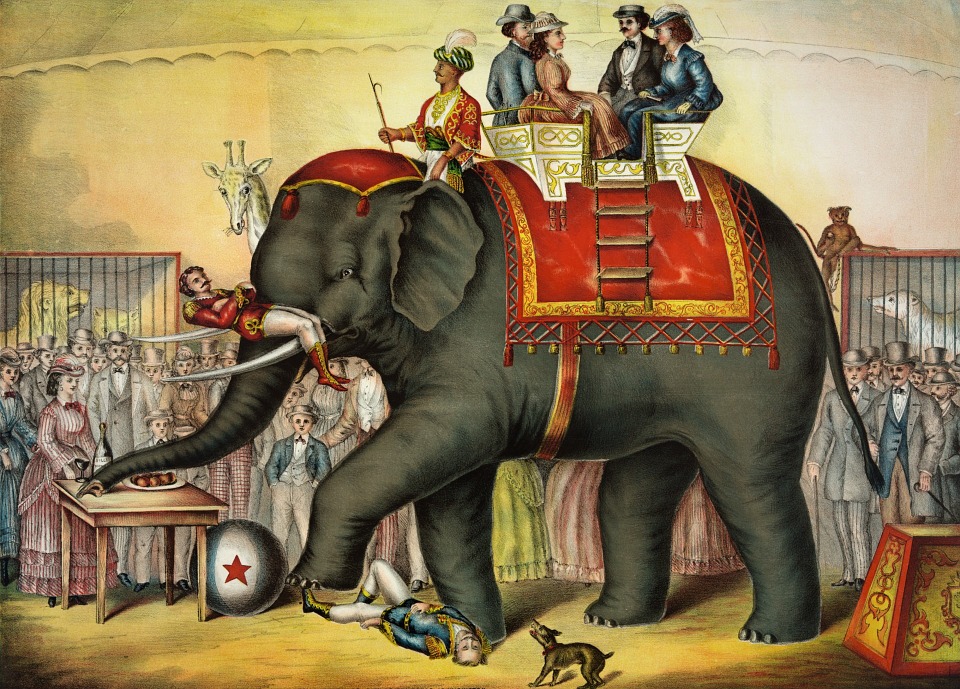In my previous posts I have been sharing the power of capturing and leveraging the voice of your customers. When we understand how our customers buy, what they need to make buying decisions and what they value we can equip our sales teams to win. I was recently asked: “ is there ever an instance when capturing customer voice does not help sales and profits? “ Yes. In this post I will share the biggest threat to leveraging customer voice research to drive sales and profits.
To review, I have studied why companies win and why up to 80% of sales teams fail to achieve their sales numbers. The most common reason is a dated value proposition and sales process. Their markets and buyers have experienced a change and sales failed to adapt their go to market plan because they failed to identify the shift.
The good news is companies who understand the power of leveraging the current voice of their customers thrive!
They experience …
- Sales growth over 30% year over year
- Higher than industry standard profits
- Increased market share
- Improved customer satisfaction
- Improved customer retention
- Discover and design more new products and services
- Improved sales quote to close %
- Reduced costs
- Improved operational efficiencies
Based on the above why wouldn’t your team want to capture the voice of your customers?
After my last post I received a phone call. It went something like this…
I have been following your content for a few months and I want to ask you something about this customer voice topic.
Sure, how can I help?
Isn’t this what my sales guys are supposed to understand and adjust to?
No, I would argue really talented salespeople who serve teams that may lack a strong marketing competence might identify and adjust to buying changes. However in my experience we do not want sales out doing surveys and interviews, we want them out selling. I would recommend a senior manager on your team, like a VP of Sales and Marketing, or a marketing manager own capturing customer voice.
This kind of feels old school, too easy a strategy to add much value, thoughts?
Understanding your buyers, the buying journey they take and what they need to make buying decisions today is old school. It is how I was taught to sell back in 1983. The trouble we have today is the speed of change we are experiencing. Think about how the recent election is changing how some may view their business. Or another interesting statistic that today more Internet searches are done from a smart phone than a desktop. Just imagine the poor companies who have awesome web sites but they are invisible on a smart phone? If capturing the voice of your customer’s sounds too simple, it is because it is. The difficulty often occurs in getting buyers to open up and share beyond the surface. The good news is there are ways to: understand and capture why buyers buy, why they don’t and what they need to buy.
Is there ever an instance you have gathered the voice of the customer information and it did not increase sales and profits?
Yes, I have been doing this for over 30 years now and there was one instance where gathering the voice of the customer and voice of the market did not work.
Why didn’t it work?
Confirmation Bias!
What is confirmation bias and how can we avoid it?
The definition of confirmation bias is: the tendency to interpret new evidence as confirmation of one’s existing beliefs or theories.
Or put another way…
“While we like to imagine that our beliefs are rational, logical, and objective, the fact is that our ideas are often based on paying attention to the information that upholds our ideas and ignoring the information that challenges our existing beliefs.”
– Verywell
Wikipedia describes it as …
The tendency to search for, interpret, favor, and recall information in a way that confirms one’s preexisting beliefs or hypotheses, while giving disproportionately less consideration to alternative possibilities.[1] … The effect is stronger for emotionally charged issues and for deeply entrenched beliefs. People also tend to interpret ambiguous evidence as supporting their existing position. Biased search, interpretation and memory have been invoked to explain attitude polarization (when a disagreement becomes more extreme even though the different parties are exposed to the same evidence), belief perseverance (when beliefs persist after the evidence for them is shown to be false), the irrational primacy effect (a greater reliance on information encountered early in a series) and illusory correlation (when people falsely perceive an association between two events or situations).
Years ago I was asked to help a 40 year old company in the irrigation industry increase their sales and profits. I was introduced to them through their new Private Equity investor in Arizona. A key part of the no smoke and mirrors process (as I call it) is to meet with buyers and understand..
Why do they buy?
What process do they use, what is their buying journey?
What criteria must they have today to make buying decisions?
Why don’t they buy from your company?
I met with this companies’ top accounts that represented 80% of their current sales. I met with three very large accounts they recently presented and lost. I also met with 5 accounts that were once very large accounts but sales have dropped 50% or more in the last 24 months. I ask the same open-ended questions to get the buyers talking. Two of my favorite questions for example are:
If you were the president of our company and wanted to grow sales with your company what would you do?
What do our competitors do very well for you?
I use between 12 and 20 questions depending on how much the buyer is opening up. If a buyer shares something that is an interruption I often ask for more information. I usually ask 2-3 industry specific questions that help the buyer feel comfortable and that I understand the market and some possible challenges they may be facing.
After meetings I write a customer voice market summary report and present it to the senior executives with strategic recommendations. If they agree that the report captures current customer perceptions, I propose new sales tools for common areas where sales stall, and a new sales process based on how buyers are buying.
I was asked to help a company on the west coast in the irrigation business. The good news in this client meeting was the senior executives and family members listened and took notes. The bad new was one senior leader’s reaction demonstrated he did not believe what his customers were saying…
I knew it; our salespeople have been doing a terrible job of selling value. (this was in response to identifying three competitors had invested in new technology that provided products faster and at a lower cost due. My client was the only one with this capability 10 years ago but the competitive landscape changed)
If a customer does not value all we do, we should not have them as a customer. (one common comment from their once top customers but are now down 50% or more was they needed to purchase products in much smaller order sizes because they switched to a just in time ordering process. Their competitors have adjusted and this company had not)
Our lagging indicators demonstrate that one point about on time shipment is simply not true. (my client did an excellent job of measuring things that matter and one were on time shipments. What I found was sales was still promising a delivery that was ½ the time their 3 plants could execute. The plants received the orders, shared a ship date with the buyers, and the buyers were aggravated the date was twice as long as what sales promised. This was not an operational issue but a sales training opportunity)
We are the only one in this industry who ————, and I do not believe our competitors now also has our capabilities. (a big part of why this client realized very strong gross margins was they were the exclusive supplier of a specific product type and the priced it based on this exclusive position( great strategy!). Before the Internet their customers used local regional suppliers. Their salespeople led with that exclusive supplier value proposition with current and targeted new clients. However two other competitors now have that capability Buyers were now doing Google searches and finding these new suppliers)
One of your recommendations is we update our web site; I think our site is just fine; We are in a relationship business and not many of our accounts are actually using it. (a big part of customer voice work is understanding how buyers shop today. What consistently came out of my interviews was buyers searched the web first and the buyers even shared the key words they used when searching. This clients’ web site was not being found with the key words shared)
What was happening here?
Confirmation Bias!
This senior leader dismissed the new current data that was not in alignment with his thoughts that he has repeated over and over again to himself that became beliefs over his 22 years with this company.
Was he just feeling insecure or threatened? Honestly I thought I was dealing with an emotional intelligence issue.
The reality is what he was experiencing we all do to some degree with every judgment we make. Heck, I do it all the time so I needed to give him some grace. In his case there was, like many business leaders, a very strong emotional connection to the strategy of this business that he helped write 15 years ago. That strategy was strong, it worked for years and that is why he was promoted to senior management.
Psychology today does a much better job of explaining what is happening…
When people would like a certain idea/concept to be true, they end up believing it to be true. They are motivated by wishful thinking. This error leads the individual to stop gathering information when the evidence gathered so far confirms the views (prejudices) one would like to be true.
I read a number of reports about confirmation bias. I read articles about leading scientist even unconsciously design experiments to have a result that confirms their hypothesis.
How do we prevent this problem from occurring?
How do we avoid confirmation bias from hurting our ability to be agile, to pivot and adjust to changes in our markets?
- Consciously look for information that feels like and interruption.
- Remove your ego.
- Discuss findings with a diverse group of people
- Allow contrary thought.
- Avoid anchoring; feeling like you have to make a quick decision hurts your brains ability to hear new contrary information. (Great article on this called ladder of influence)
How about your company?
Would your culture and leaders value new current market data based on the voice of your buyers perceptions today?
Has someone recently shared market information and that person was viewed as not being loyal or a heretic?
Could confirmation bias be negatively impacting your team’s sales and profits today?
The best and quickest method to increase a companies’ sales and profits is to understand how their buyers are buying today, and what they must have to make buying decisions today. Once you capture the voice of your customers today you can leverage that information by adapting your sales process, adding new sales tools and adjusting how you serve your customers.
The biggest threat to customer voice research is confirmation bias, what out gut tells us based on the past. It is based on data that was probably true at some time, but is not relevant in your market today. It could be based on a leaders desire for the way they want things to work based on their known constraints. Or how things used to be when times were good.
To be a market leading organization we must listen to the perceptions of our customers and adapt.
By the way…
Not everything customers share in customer voice research is negative. Sometimes they share they no longer value services that cause your team operational inefficiency problems and once eliminated, improve your operational efficiency and reduce your cost to manufacture. Customer voice is a key part of lean six sigma. And if your team is implementing LEAN you will need to understand your customers.
As the leader of your team be intentional in capturing the voice of your customers and look for interruptions in the data and adapt.








